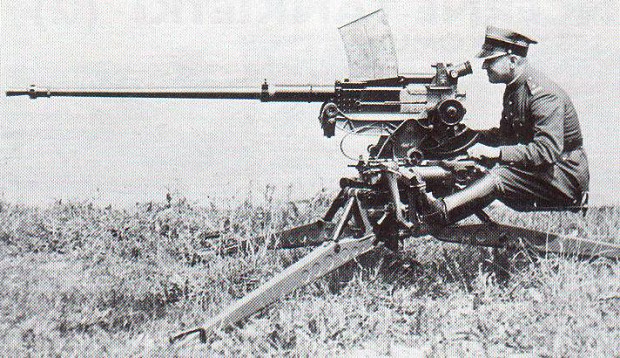Air Defense Lovers Group
Hobbies & Interests
Do you hate aircraft? Do you hate anything what can fly? Do you want to destroy them? Then you are in a right place! Just join this group, and take control over one of our AA systems then you can blow them out of the skies! (header image done by vlado32)
This weapon was classified in Poland before the war as the heaviest machine gun (najcięższy karabin maszynowy - nkm). It was designed in 1937 in Fabryka Karabinów (Rifle Factory) in Warsaw by Bolesław Jurek, as "model A" (the designations: FK-A or FK wz.38 are an abbreviation of the factory). An initiator of works upon Polish 20mm automatic cannon was the airforce, then it was decided, that a weapon must fulfil also demands of the armoured weapons and the infantry, as an anti-aircraft weapon.
The prototype of model A gun was completed in November 1937. As a tank gun, it was evaluated as better, than tested foreign guns Oerlikon and Madsen. Tests proved, that it was accurate and reliable, its construction was simple and its armour penetration was better, than of tested foreign guns. It penetrated the same armour plates from a distance 200m further. In 1938, model A cannon was accepted in a limited number as a tank armament and anti-aircraft weapon, until the works upon improved guns (models C and D) would be completed. For anti-aircraft duties, heavy and light tripod mountings were worked.







The 20mm cannon model A was recoil-operated (short recoil). It could fire single or series shots. It was fed from 5-round box magazines (10-round magazines were in development). As a tank gun, it was fitted with a butt and a telescopic sight.
The ammunition was also developed in Poland, modeled after "long" Solothurn ammunition 20x138 mm (during trials, Solothurn bullets were used with Polish cartridges). A report from the nkm model A trials says however, that case length was 140 mm (it should be noted, that there is one report, that once in combat the captured German ammunition 2cm Kwk-38 was used, which was also identical as Solothurn). The following armour piercing rounds were developed:
- PWS - explosive round with a tracer and base fuze (APHE-T),
- PZS - ignition round with a tracer (API-T),
and practice rounds: PC and PCS (the last with a tracer).
For AA duties there were developed: an explosive round LWS with a tracer and a sensitive fuze, practice rounds: LC and LCS (the last with a tracer), and drum magazines 15- and 100-round.
Before the war, about 90,000 AP rounds were ordered.
Gun weight - 57.6 kg, barrel weight without muzzle brake - 20.2 kg, muzzle brake weight - 1 kg.
Gun length with muzzle brake - 2015 mm (without muzzle brake - 1895 mm), barrel length with muzzle brake - 1470 mm (without muzzle brake - 1350 mm), gun width with lock handles - 202,5 mm (without lock handles - 102,5 mm).
Max. range - about 7000 m. Max. bullet velocity - 820 - 858 m/s (depending on ammunition), theoretical rate of fire - 320 rds/min.
Armour penetration: thickness / distance
Carbonated armour plates, perpendicular: 20mm / 300m, 15mm / 500m
Carbonated armour plates, inclined at 30°: 20mm / 100m, 15mm / 400m
Homogeneous armour plates, perpendicular: 40 mm / 200m, 25mm / 800m, 15mm / 1500m.
Homogeneous armour plates, inclined at 30°: 25mm / 300m, 20mm / 500m, 15mm / 600m.
Giant mag :)
Galileo Jr. searching for aircraft rather than planets.
An epic AA gun......Would be terryfing if it was ever used for sniping